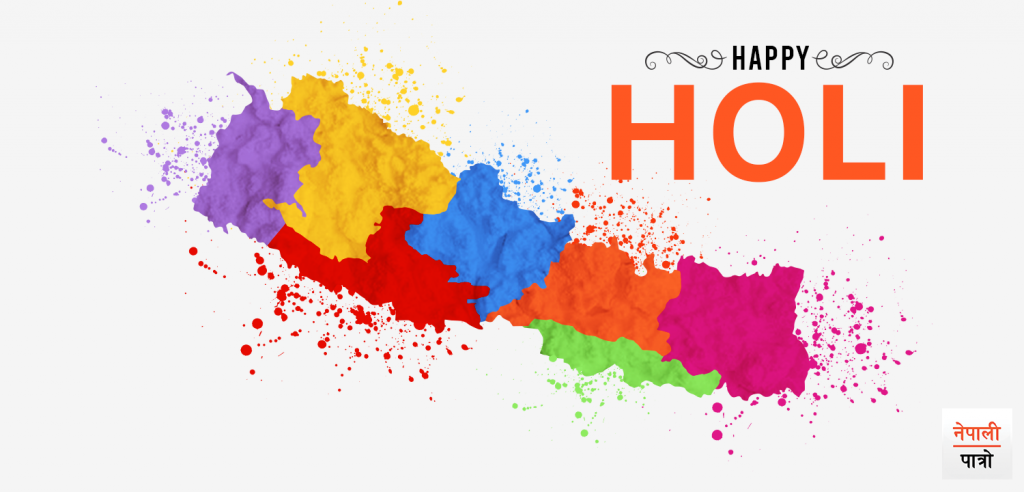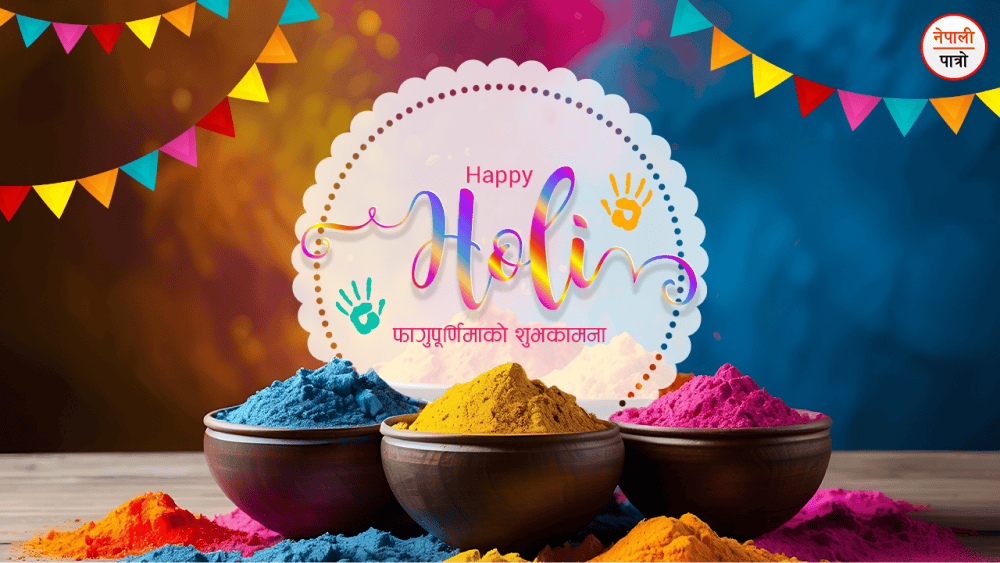
Fagu Purnima – Holi
The celebrations of Holi can be seen as a mark of happiness and delight between relatives and friends, also known as Fagu Purnima. The festival, celebrated with different colors signifies love, affection, and harmony, which is celebrated on the full moon day during the month of Falgun. On the eighth day of Falgun Shuklapakchya (night of the full moon), the festival begins after placing a Chir (Pole with different color clothes) at Basantapur and concludes by burning it at Tundikhel. The whole followers of the eastern Hindu tradition celebrate it with great zeal, but the beauty of the festival lies on the full moon day. Hence, this day is also known as Holi Purnima or Fagu Purnima.
From the dawn of human civilization there is a history of society uniting against injustice, torture and, violence including the dictatorship of a despotic dictator. The frenzy of power awakens ego in man and that ego forgets the virtues of truth, religion, love, virtue, non-violence and blinds people to lust and selfishness. Mentioned in the Puranas, Daityaraj Hiranyakashyap proclaims himself God after the frenzy of the boon received from lord Brahmaji. At the same time his little son Pralhad appears as a special devotee of Lord Bishnu.
The arrogant and sinful maniac, Daityaraj Hiranyakashyap makes the people worship him as a god. On the other hand, he perceives Bhagavad devotee Prahlad as his ultimate enemy and decided to commit filicide and poison Prahlad. Sister of Hiranyakashyap, Holika, who received the gift of not being touched by fire entered the burning pyre with child Prahlad but Pralhad is saved and the sinful Holika is burned by fire. Holi is believed to be celebrated to commemorate and celebrate the joy of holikas cremation. The custom of burning Holika on the previous night of Holi Purnima as a symbol of Holika burning has been kept up to date. After Holika’s death, to save Prahlad, to protect justice and religion Lord Bishnu takes the reincarnation of Narsimha, and finally overcomes the pinnacle of sin and oppression of Hiranyakasyap. These mythological events are also linked to the Holi festival.
Apart from this, during the Dwapar Yuga, demoness Putana was abducting and killing breastfeeding babies. The colorful celebration of the Holi festival is also associated with Lord Krishna killing Putana, and Kansha her brother. On the command of Kansha, Putana gave poisonous milk for the purpose of killing Lord Krishna, but he took away her life instead. Then, the people of Braj (ancient city of Mathura) cremated the giant body and celebrated rubbing different colors among each other. It is believed that the tradition of playing Holi every year is commemorated in memory of the great calamity that terminated with the end of these monsters.
Another context states that Lord Shiva was crazy after Satidevi, daughter of Dakchya threw herself at the Yagyakunda fire and sacrificed herself. Kamdev tried to hypnotize Lord Shiva to the material world by striking the arrow of desire. But this act opened the third eye of Lord shiva and he was burned to ashes from the flame. After the lamentations of kamdev’s wife Rati and from the request of Gods, Lord Shiva was impressed and gave him the boon to be alive again. Merrily the gods made a shower of colors for the celebration, thus Holi festival or Fagu Purnima festival is associated with the above context too.
In summary, in the triumph of happiness of truth prevailing over falsehood, religion over iniquity, of justice over injustice and of good over evil Holi/ Fagu Purnima is celebrated. The tradition of singing various hymns of God in local dialects has been another aspect of the Holi festival. During this festival Hori, Holi, Horiya, Faguwa, Khyali, Tappa, Basantaraga, etc are sung and danced. Another part of this festival is to provide an opportunity to receive colors, blessings from the elders and honoring them. Hence, Holi is a festival to abandon all the resentment, anger and to foster love and intimacy. It is celebrated cheerfully by consuming different sweets and desserts. Holi is celebrated especially in Nepal and India as a National festival. Nowadays, Holi is celebrated in other countries as well because of the cultural mixture.

March 11, 2020 6 years
happy holi